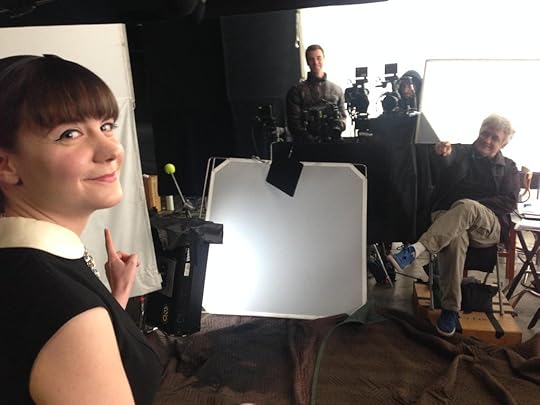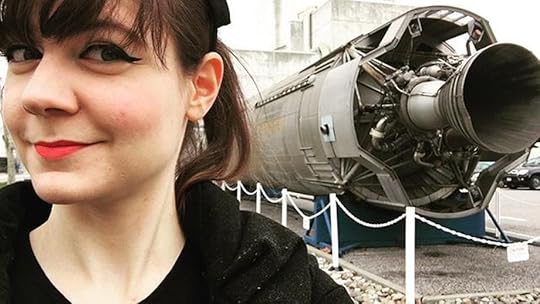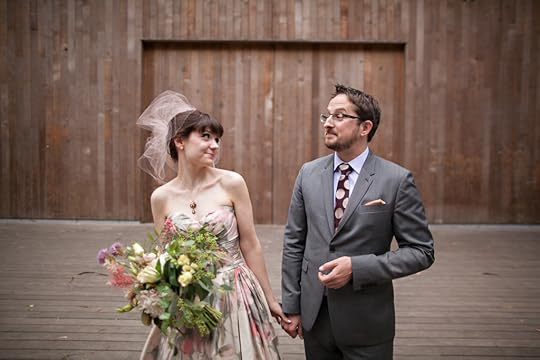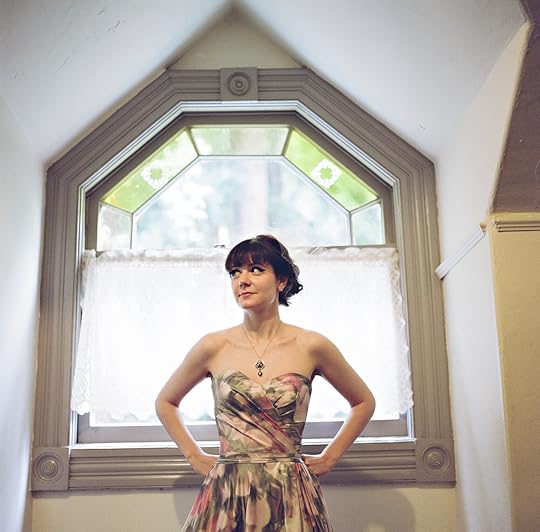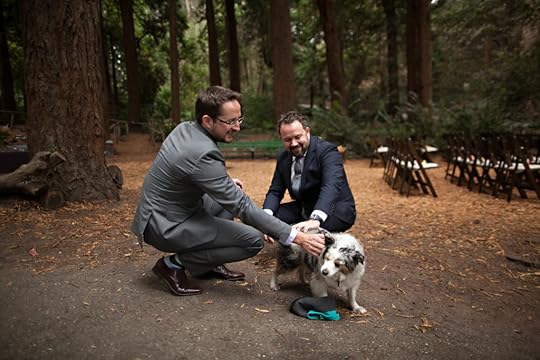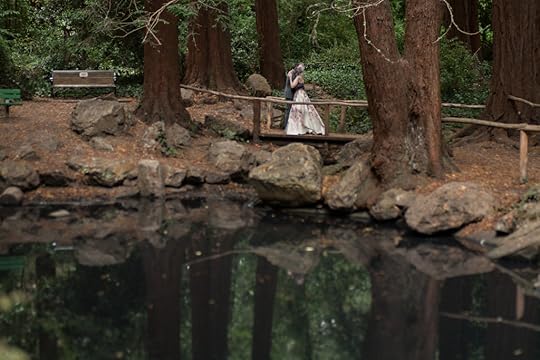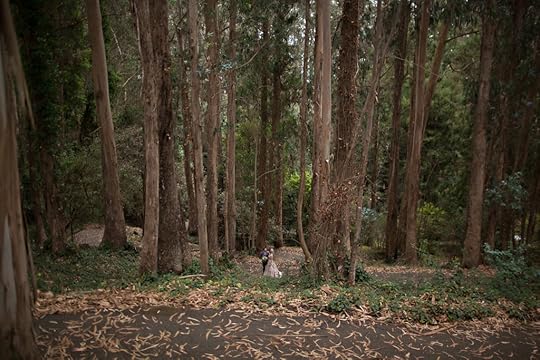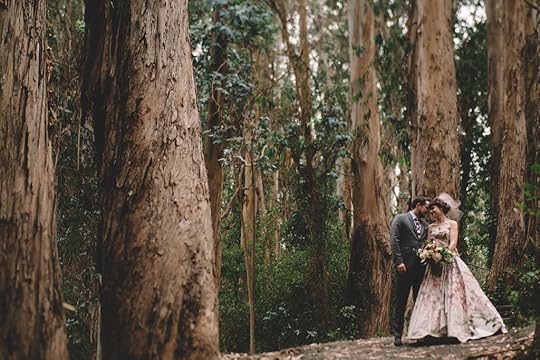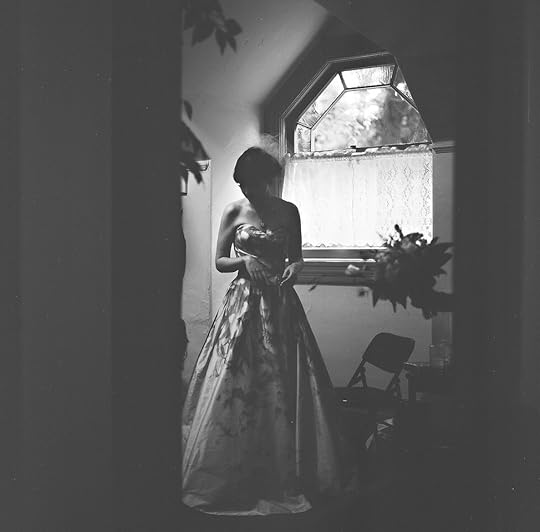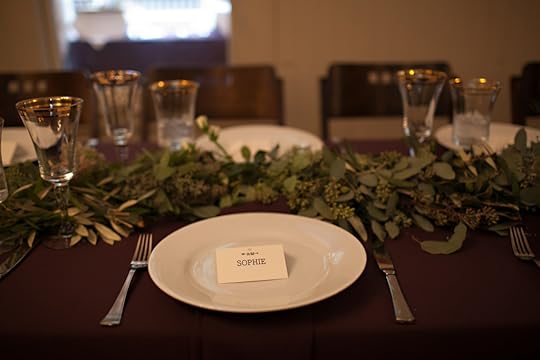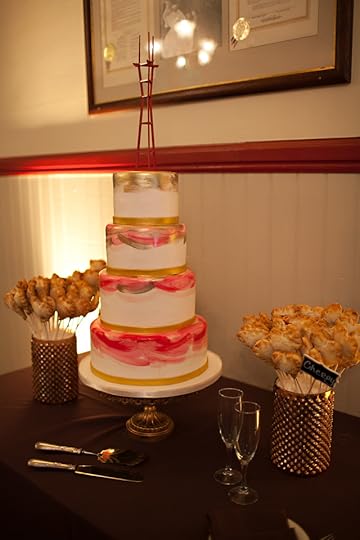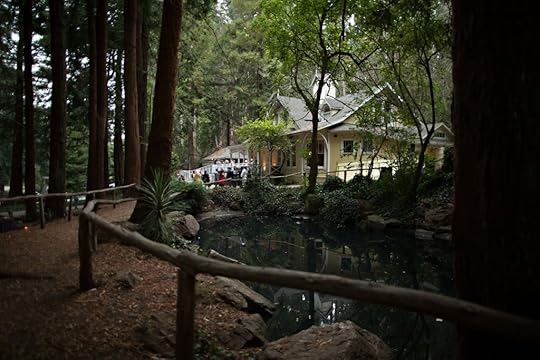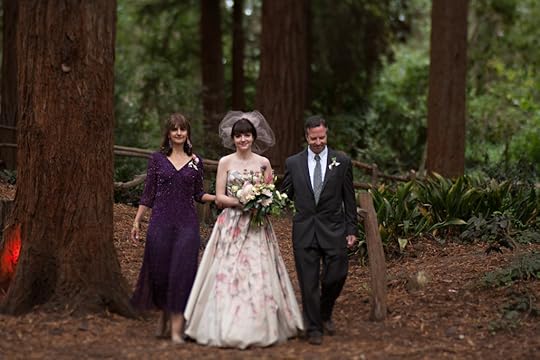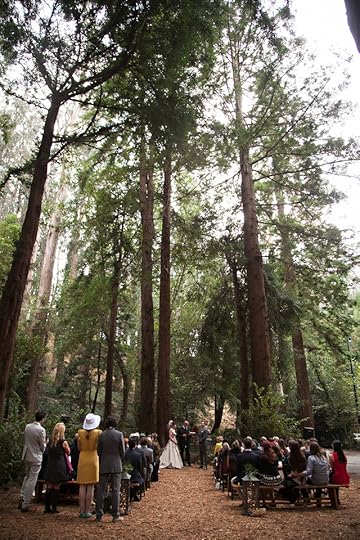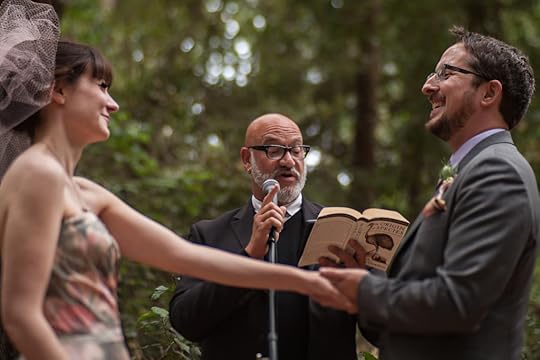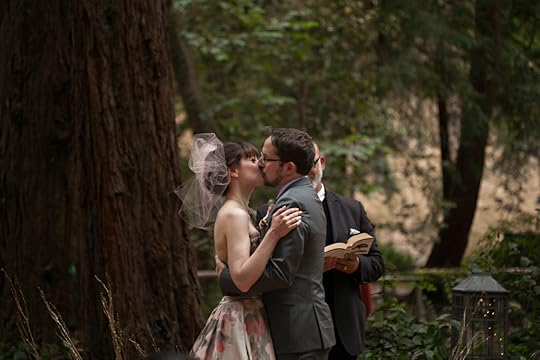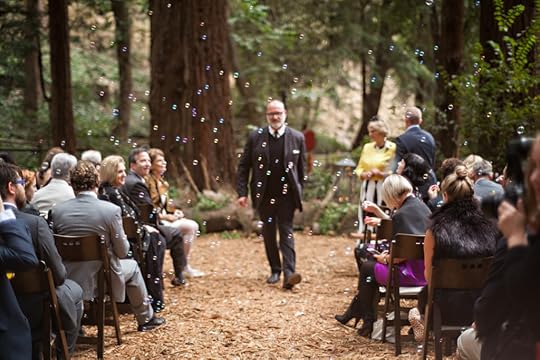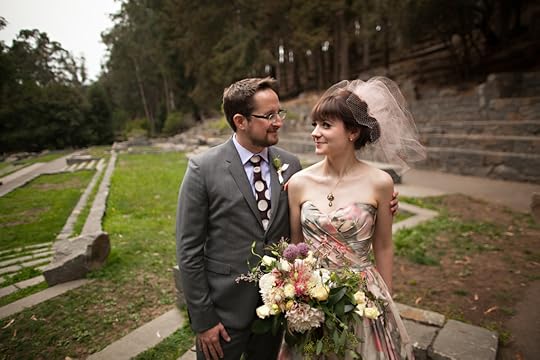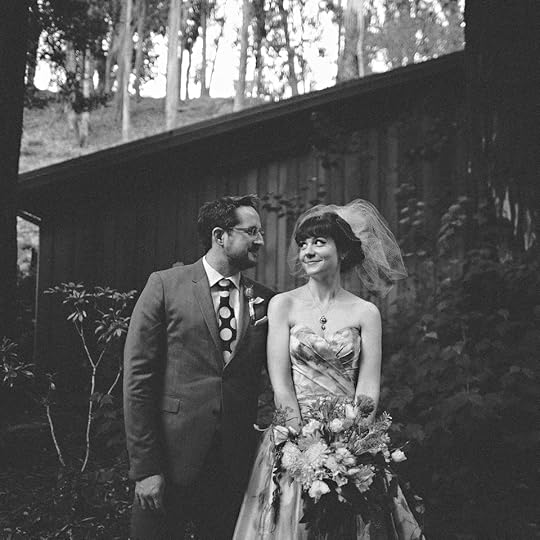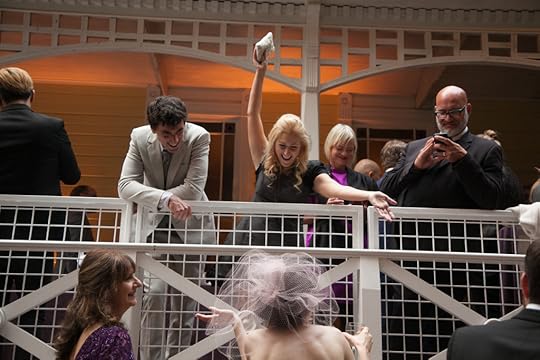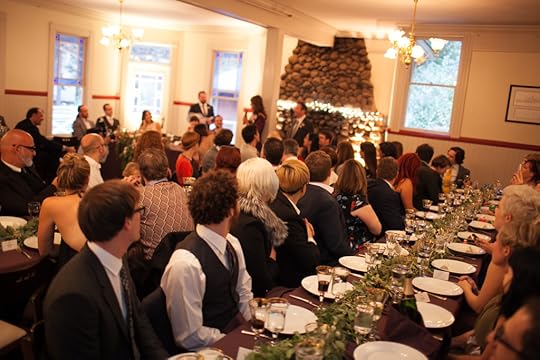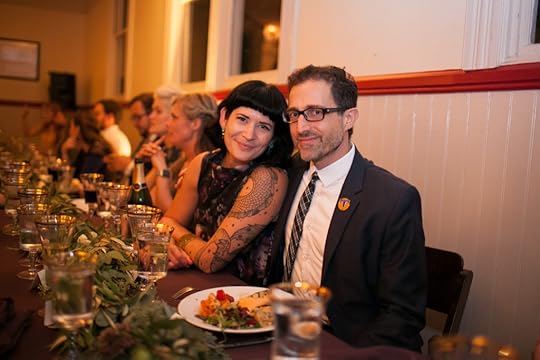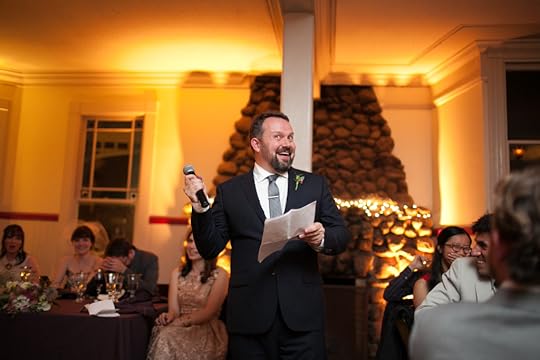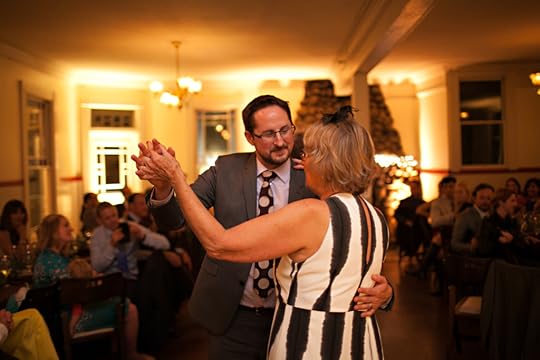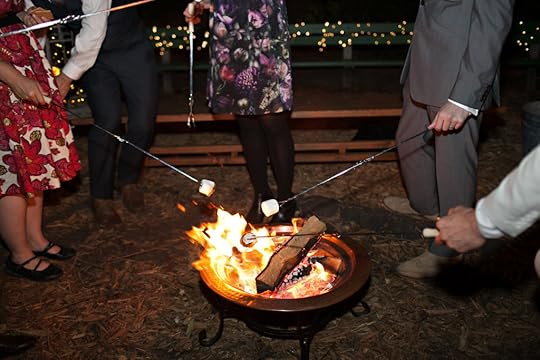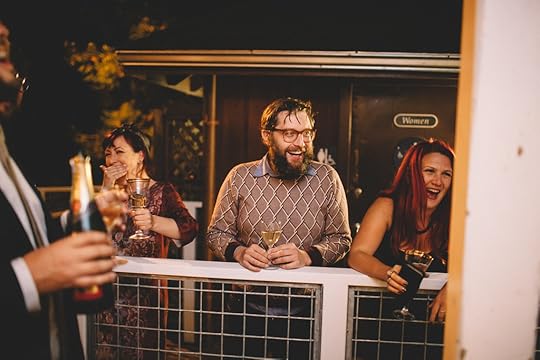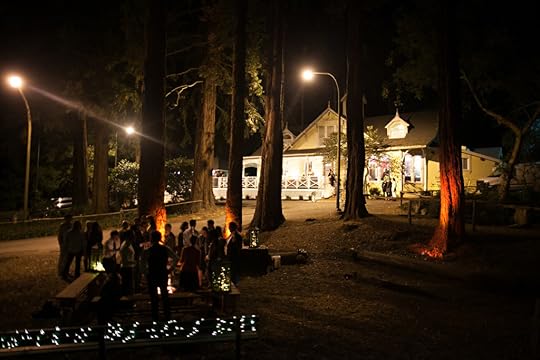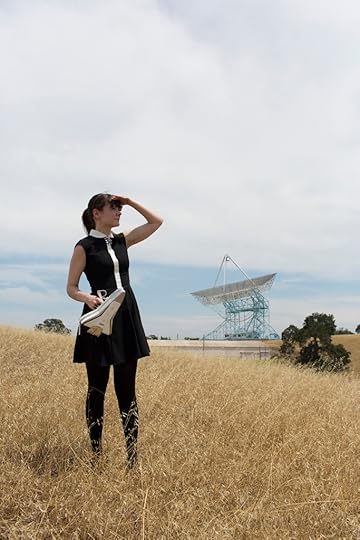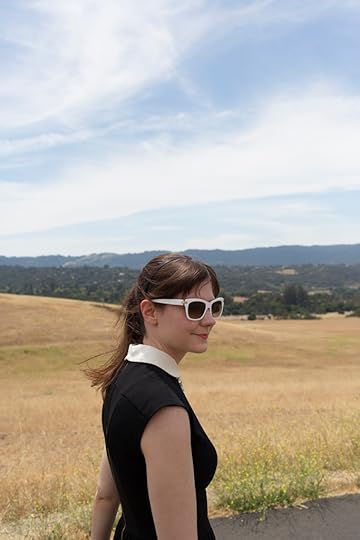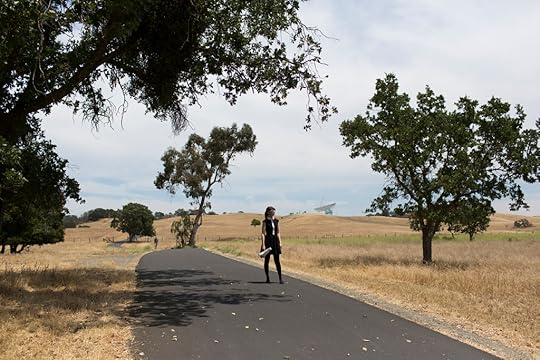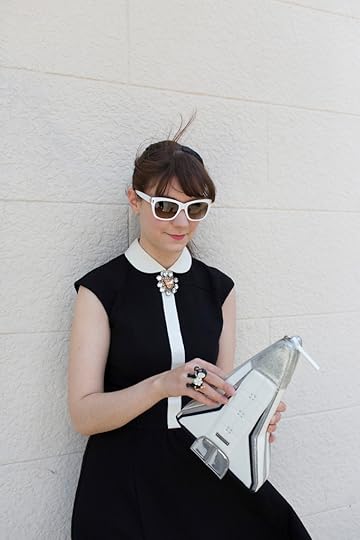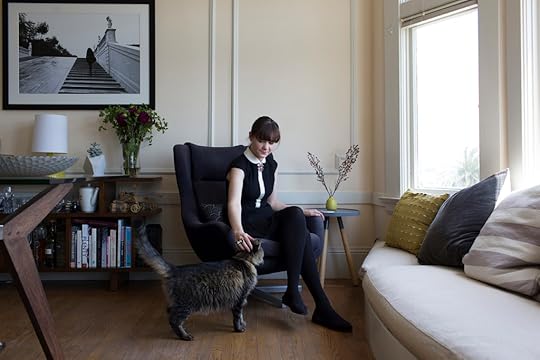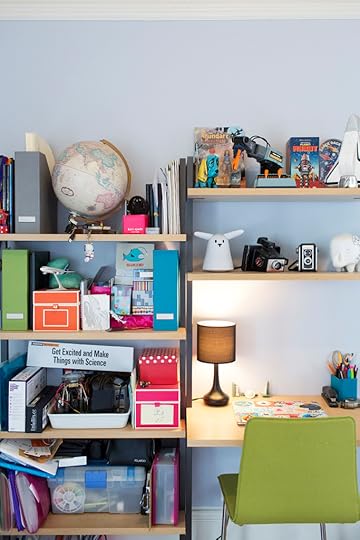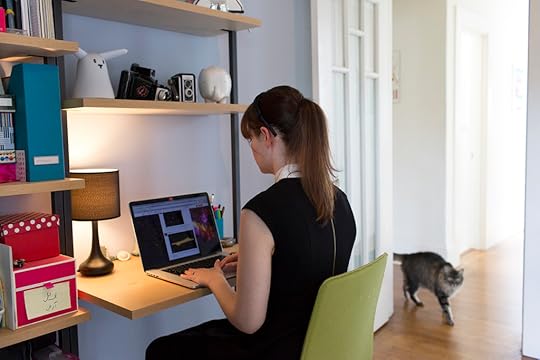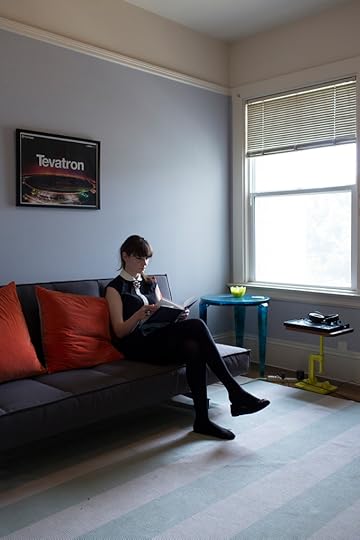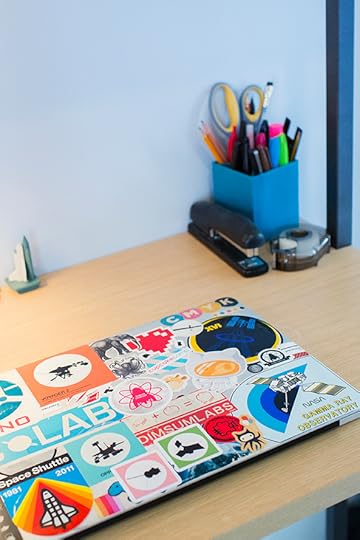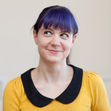Ariel Waldman's Blog
August 6, 2018
I’m going to Antarctica! Want a postcard?
I’m going to Antarctica! My heart is fluttering even just typing that right now.
I have spent the past five years (five!) working on trying to go to Antarctica. And now, later this year I’ll be spending an entire month there! For me, going to Antarctica is like going to space… only I get to keep that nifty gravity and atmosphere as carry-on luggage.
This is going to be a multi-month endeavor for me and I expect it will be a lot of work as a team of one. This is where all of you come in, because I really could use your help. While my flight and my room/board in Antarctica is covered, all of my time and all the cool equipment that I need to pull off this project is not funded at all. Signing up for my Patreon is a massive way you can help directly fund this project, and also receive some pretty rad rewards like a postcard from me to you stamped from Antarctica!
So, you may be wondering at this point what the heck am I doing there!?
I am going to be exploring the life beneath the ice. A common misperception about Antarctica is that it is barren and lifeless, save for perhaps some penguins. But under the ice exists a microbial “Serengeti” of life and I want to bring you all along on a safari to see it with your own eyes. I’ll be doing video microscopy (shooting video through a microscope) of the weird creepy crawlies that live in this extreme environment.
In addition to creating videos on my YouTube channel about what it’s like in Antarctica, I’ll be sharing what it’s like to prepare for deployment to Antarctica and how you, too, can capture extremophiles (like tardigrades!) in your own backyard with a microscope. Since I can’t take all of you to Antarctica with me, I want to bring as much of Antarctica to you as I can.
I have a lot more to say and share but for now I just want to say thank you to all of you, those who I’ve met in person and those I haven’t yet, for all your support and encouragement over the years and in recent days. This expedition means a lot to me and I couldn’t do it without you.
—
On that note, I want to specifically thank:
Ken Mankoff for telling me about this opportunity back in 2013. Chris McKay for invaluable advice, encouragement and for helping me get my first microscope. Jill Mikucki for amazing support both on the field and off and being there for me in so many ways. Britney Schmidt and John Priscu (and team) for field support. Gisele Giorgi and Peter Werner, including everyone at the Merritt College Microscopy Program and the San Francisco Microscopical Society for all the education and encouragement. Mike Lucibella, Valentine Kass, Jenny Cunningham, and Peter West for the opportunity and dedication to the program. Lynn Rothschild, Matt Ganucheau, Ian Brunswick, Maryanna Rogers, Marina Gorbis, Seth Shostak, and Josh Greenberg for your support. Matt Bellis, Penny Boston, and Alex Parker for helping improve my grant proposal writing. Caroline Miller for being so welcoming when I was at the start of figuring out microscopes. Matt Biddulph, Lisa Ballard, and so many of my friends for being there for me through ‘thick and thin’ over these past few years. And finally, thanks to the many people who I haven’t met yet who will be helping me while I’m on the ice!
July 22, 2018
Science Adventure: 1 Mile Underground!
I went a mile underground inside an abandoned gold mine …for science!
I was in Lead, South Dakota (next to Deadwood) to keynote their big public event called Neutrino Day where families come in from the surrounding areas to geek out about particle physics, which is so cool.
I always adore a chance to geek out about neutrinos and subatomic particle collisions, but I was especially excited to get a chance to go one mile underground and see all the cool science taking place. The Sanford Lab is host to a particle accelerator, extremophile research, dark matter experiments and the Deep Underground Neutrino Experiment (DUNE).
January 8, 2018
Excited to announce I have a new show on Tested!
Premiering today for the first time – I’m hosting a new show with Tested called Offworld! Tested is Mythbusters’ Adam Savage’s YouTube channel that has over 3 million subscribers. Offworld will be about all things outer space + pop culture. Check out the first episode featuring astronomer Dr. Jill Tarter and Norm Chan as we geek out about the movie Contact:
I’m also still continuing to grow my own YouTube channel where I make short and sweet space-tastic videos, so be sure to subscribe there, too!
December 31, 2017
No Hate, No Fear: my year in protests
As many people today, on New Year’s Eve, are reflecting on the year they had, I feel compelled to document and more suitably archive my year in protests. This is not a post telling you what you should do or what to compare yourself to. Welcome to a personal blog – my personal blog. Going through these photos and videos helps give me faith for whatever 2018 brings, whether it’s rebuilding a long staircase out of the darkness, or simply surviving it. It’s helpful for me to remember that this is not a marathon, nor a sprint, but a relay.
To those claiming protests aren’t effective: this is how you build community strength to do the other things required in fighting fascism
July 5, 2016
I’m on the Science Channel!
Geeky confession: I was excited to wake up & see @ScienceChannel RTed me: http://is.gd/7bQ1Jh . Geeky dream: Ideally, 1 day I’ll be on it.
— Ariel Waldman (@arielwaldman) June 23, 2011
Five years ago I revealed on Twitter that one of my geek dreams was to appear on the Science Channel. Little did I know that a few months later I would be appearing on the SyFy channel, which was a lot of fun and deepened my desire. And now, five years later, I will appear on the Science Channel! Appearing on TV is something very near and dear to me because of how central a role TV shows, documentaries and films have played in inspiring me to be where I am today.
I had never self-identified as a science geek, but I always enjoyed watching science documentaries. In 2008, I was watching the documentary When We Left Earth on the Discovery Channel that captured the story of NASA sending a human into space. The documentary interviewed people who had worked in mission control at the time and shared their story of how they didn’t know anything about orbits or rocketry or spacecrafts – they were figuring it out as they went. As a millennial who had grown up in Kansas and attended art school, this was new information to me and I found it incredibly inspiring. I didn’t know anything about space exploration either, but all of a sudden I wanted to work at NASA, too! I took that inspiration and shortly thereafter emailed NASA a fangirl letter to volunteer myself. Very unexpectedly, I ended up getting a job at NASA from that email. The rest is history, aka my biography to date.
Tomorrow my dream from five years ago will be realized when I be appear on the Science Channel! The show is called How To Build Everything (#HowToBuild) and it airs on Wednesdays 10pm Eastern (9pm Central, 7pm Pacific). I’ll be talking about how to build an interplanetary rover! I’ll also be in a couple of upcoming episodes talking about how to build spacesuits and rocketships. Below is a shot of me from filming last year. Tune in!
April 11, 2016
Ariel’s indie report for Q1 2016
Originally posted to my Patreon page, where you can directly support my work!
Anyone who knows me knows I work on a ton of different projects at any given moment. This is why I am often tongue-tied whenever someone asks me what I do or what I’ve been up to lately. Over time I’ve come to embrace being scattered and found that my strength is actually in working across an assortment of projects and different industries.
I post as much of my work as I can here on Patreon and Twitter, but I realized that it’s not always clear what projects of mine have no financial backing other than the support I receive from all of you here on Patreon! So here’s a roundup of what “indie” projects I’ve been working on so far in 2016 and what’s on my radar next:
I originally created this site back in 2008 in just two weeks of my spare time immediately following when I left NASA Ames. I’ve been spending about a day a week, with my friend and collaborator Lisa Ballard (also donating her spare time), working on completely redesigning the site. Coming up on being 8 years old, the site is not only showing its age aesthetically, but it also weighed me down with too much continuous management over the years. Redesigning will not only be a nice refresh, but also will be easier for me to manage moving forward.
I am the global director of Science Hack Day, which is in over 20 countries now. If you don’t know about Science Hack Day, check out this video from one of the events. Science Hack Day is essentially about creating what I call “massively multiplayer science” and I firmly believe it is changing the world, even if just a little. I work on managing pretty much everything to do with Science Hack Day year-round. Lots of admin, communication, outreach, and design tasks. I also make myself as available-as-possible for free to people organizing Science Hack Day events around the world, which also means a lot of travel time each year. While I have received small grants and secured global sponsors in the past that have supported small portions of my time in global management, there are no current grants or global sponsors. An important distinction here: the sponsorship money for individual cities (e.g. San Francisco, etc.) goes directly to the event itself.
I have been teaching myself microscopy over the last few months. I got a 20lb. microscope and taught myself how to find tardigrades from my backyard. I also spent a lot of time learning about Rheinberg filters and other techniques I could use for “visually staining” specimens. I began to learn just how much time it takes to manage a microscope (and paid for professional cleaning and servicing when I reached my wits end). I joined the San Francisco Microscopy Society. I co-authored a poster which I presented at the NASA Ames Astrobiology Jamboree to talk about my work thus far with other space science professionals. This all has definitely been a trial in patience – microscopy takes a lot of patience, and I’m certainly not the most patient person. While all this foundational work doesn’t yet help anyone but myself, it’s all part of a long play of me trying to get a grant to go to Antarctica that I hope will benefit others (both biologists and people interested in learning more about Antarctica).
4. Smaller ongoing projects that I continuously manage
I continue to manage Spaceprob.es, a catalog of the human-made machines that freckle our solar system. Myself & Lisa Ballard launched Spaceprob.es a year ago (after many months of indie work) and continuously make sure to keep it up to date. I also have other ongoing projects like the Future of Science tumblr that I run with Eri Gentry.
5. Starter projects that might be financially supported in the future but aren’t right now:
I’ve been in talks around creating a TV show that I would host and help produce. So far this has mostly resulted in a decent amount of legal fees as I explore the opportunities, but fingers crossed one will pan out. I have also been exploring doing a mini-fashion line with Betabrand (you can help by voting here!).
Finally, here are the indie projects on my radar to try to get to over the next few months:
• a project about the history of human spaceflight
• a project about multidisciplinary people
• returning to doing short, fun, space-tastic YouTube videos
Thank you so much for all your love and support of my work. And if you haven’t yet become a patron of my work, you can do so here. It’s not always easy being independent, but you all make it worthwhile.
Ariel
January 2, 2016
2015
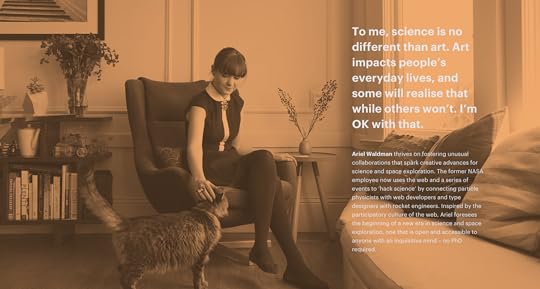 From my interview with Offscreen Magazine in 2015 which included an awesome photoshoot at the space-communicating Stanford Dish.
From my interview with Offscreen Magazine in 2015 which included an awesome photoshoot at the space-communicating Stanford Dish.
First and foremost, I’m looking forward to 2016! It’s the year that my book, What’s It Like in Space? comes out (available now for pre-order). It’s weird, funny and surprising. I’m quite proud of it. What I’m also looking forward to is creating new awesome things in the world – get in touch if you’d like to scheme on making something fun with me.
Now to the clip show. My 2015 was a year well-balanced in new endeavors and maintaining ongoing projects. There are a number of ventures and experiences throughout the year that I found quite delightful.
I built and launched Spaceprob.es, a catalog of the active human-made machines that freckle our solar system, with my friend and long-time collaborator Lisa Ballard.
I celebrated the 50th worldwide Science Hack Day event, a 20+ countries grassroots endeavor to make things with science that I’ve been tenaciously growing for five years.
I traveled to Russia for the first time as a guest of the U.S. Consulate in St. Petersburg and I absolutely loved it.
I was very honored to be invited to give a center-wide talk at the NASA Jet Propulsion Laboratory (JPL).
I walked the halls of Congress for the first time, appealing to staff members for an increase in NASA funding.
I experimented with creating short-and-silly YouTube videos about my favorite space things.
I continued my stint with NASA Innovative Advanced Concepts (NIAC), a program that nurtures radical, science-fiction-esque ideas that could transform the future of space exploration and aeronautics. Think submarines exploring Titan, propulsion systems that harvest kinetic energy from comets, deep space human hibernation and squid-like rovers on Europa. This year I built niacfellows.org as a helpful guide for how anyone can apply to the program.
I shot a TV thing for the Science Channel (more on that in 2016!).
I designed interfaces and interactions for surgical robots (alas, under NDA).
I took the dive and created a Patreon for people who want to support my work in creating “massively multiplayer science”. As someone who has been independent now for over 8 years, it’s a fantastic platform for sharing my trials, wins, and sneak peeks of my upcoming projects.
Oh yeah, and I got married!
December 13, 2015
A San Francisco wedding
Ariel Waldman and Matt Biddulph were married among the redwoods and eucalyptus trees surrounding the Trocadero Clubhouse in Stern Grove in San Francisco. One Love Photo were there to capture the day.
Ariel wore a couture dress made by a local designer, Atelier des Modistes. The dress featured a sweet pea floral watercolor on silk taffeta from Italy.
Matt and best man, Tom Coates, say hello to the local dog-walkers before the ceremony.
Ariel & Matt enjoy a “first look” in the grove before the ceremony.
Wedding planner Sugar Rush Events looked after all the details.
Sutro Tower served as the cake topper to a watercolor cake and pie pops created by Sweet Lauren Cakes.
Ariel walked down the aisle with Mom and Dad to the piano cover of Where Is My Mind?.
Officiator, David Pescovitz, held an Origin of Species book for the ceremony and read quotes from Ann Druyan, among other luminaries.
Bubbles filled the ceremony following the vows.
“Bridal brigade” Violet Blue and Lisa Ballard celebrate.
Bouquets and floral decor were created by friend Gem Spear. Matt was styled by Kelly Sparks.
Jane McGonigal gives Ariel a “fiero!”
Tasty food and some of the best ravioli ever catered by Alex’s Catering.
Tom Coates gave a rousing Best Man speech in proper English style.
Matt and Mum.
S’mores, of course!
Ariel and Matt were engaged among the dancing lemurs and wonderful communities in Madagascar. Ariel wrote about the trip to Madagascar for Science Hack Day last year. They asked guests and friends to give back to this place that will forever be near and dear to their hearts. Madagascar is one of the top poorest countries in the world and lemurs are one of the most endangered animals on the planet, with many of them on the brink of extinction.
Centre ValBio was founded by Dr. Patricia Wright, a MacArthur “Genius” award-winner who has been working in Madagascar since 1986. Centre ValBio was created to help both indigenous people and the international community better understand the value of conservation in Madagascar and around the world. The organization is located in Ranomafana National Park, a place in the Southeast of Madagascar that was designated as a protected national park entirely due to Dr. Wright’s work.
November 22, 2015
Photoshoot
A few months ago I did a photoshoot with the lovely Helena Price for Offscreen Magazine. We walked around San Francisco a bit before deciding to head up to the space-communicating Stanford Dish. Not having visited it before, what we thought would be a quick run up a hill turned into a hike on one of the hottest days in the Bay Area, for which neither one of us had planned for things like, you know, water, or sunscreen. Anyway, here are the pictures from the day before we succumbed to dehydration! All pictures courtesy of Helena Price.
December 11, 2014
The emergence of science hacking in Madagascar
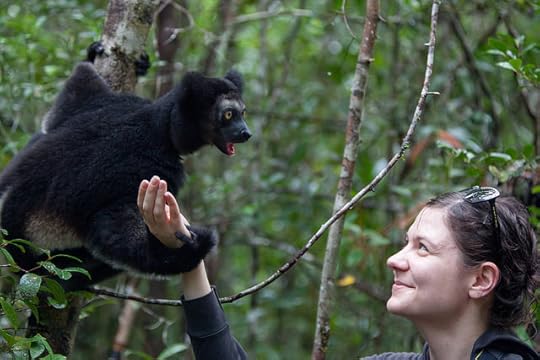
Me chatting it up with a fan of Science Hack Day Antananarivo (photo by Matt Biddulph)
This article was originally published on Boing Boing and has been reposted here.
Descending into Madagascar at night is an experience. I was enveloped in and captivated by the darkness. The expected sight of bright lights, distinguishing cities, small towns or even an airport runway, slowly dissipated as I pressed my face against the plastic Air France window. Occasionally, the plane would pass over a handful of small lights – almost like looking at the few stars you can see on a clear night in New York City. There is, for a moment, a quieting calm. Stepping onto the runway and into the immigration hall, the silent darkness ends abruptly. Bright florescent lights beamed down as I squinted and was herded into an over-crowded cattle pen of people pushing in every direction to hand off their landing cards and passports for inspection. People clamored over each other, extending their passports over the shoulders of others, climbing over children to get to the front of the crowd. No lines, no waiting, no calm, no conventions, no personal space. It was an exhilarating rush of city-like urgency, if not overwhelming. The lack of a distinctive electrical grid and the country’s self-declaration as a land of “mora mora”, a Malagasy phrase meaning to take life slow, could easily mislead one into thinking that this island of 22 million people prefer to kick-back and watch the world go by. Not so. As Science Hack Day Antananarivo was about to show me, Madagascar is pulsing with an insatiable liveliness for science and technology – a cybernetic horse champing at the 8-bit.
The next morning, I met with the Science Hack Day organizers who were darting around to get the venue ready for the arrival of Madame Rasoazananera Marie Monique, the “Ministre de l’Enseignement Supérieur et de la Recherche Scientifique”, who I learned was a very notable figure within the government when everyone abruptly stood up upon her arrival. She and other officials spoke of how it wasn’t enough to just have the people of Madagascar get PhD’s and write scientific papers – that what Madagascar really needed was more people who were actively involved in experimenting, creating solutions and prototyping ideas with science. I was pleasantly surprised to hear this. It’s rare for me to encounter government officials that recognize from the get-go that simply raising the percentage of people who acquire PhD’s in your country does not necessarily equate to seeing science in action or having a country of empowered people who can build real-world solutions. I could tell just how meaningful this Science Hack Day was for proving to the newly internationally-recognized Madagascar government (that came into power just this year to mark the end of the widely-condemned coup that happened in 2009) that people from all backgrounds can make amazing things with science.
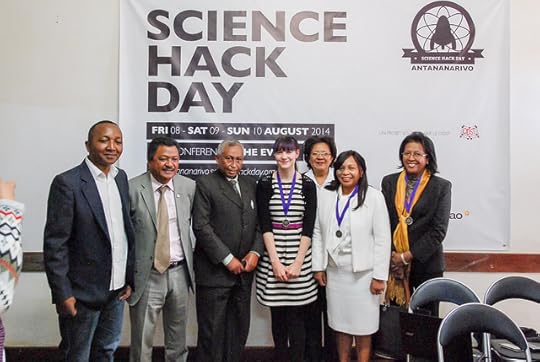
Me posing for a photo alongside the Ministre de l’Enseignement Supérieur et de la Recherche Scientifique
It’s easy to see why the government is wanting to move science into a more active role in Madagascar. Madagascar frequently ranks in the top ten poorest countries across the entire world, sometimes as high as the top five based on varying data points. 75% of the country is considered to be living in poverty, with over 90% of the country living on less than $2 a day. The wildlife, which Madagascar is internationally known for, have been deeply exploited. Approximately 90% of Madagascar’s plants and animals exist nowhere else on Earth. From the 1950’s to 2000, the country lost approximately 50% of its forests. Lemurs, which exist naturally only in Madagascar, have been deemed the most threatened mammal on Earth – meaning they are the most likely mammal to go extinct in the near future (the Northern Sportive Lemur, for example, has less than 20 individuals of its species in existence today). The biodiversity in Madagascar has also made its plants a target for excessive exploitation via pharmaceutical companies, which hurt not only the plants themselves, but also the local economy which rarely receives profit from these outsider operations. As a knock-on effect, a few scientists I spoke to in the region said they sometimes avoid knowledge-sharing due to a reasonable paranoia over companies regularly exploiting Madagascar for all its worth. Amidst all these unfortunate facts, there are glimmers of hope to be found in an emerging community of science hackers.
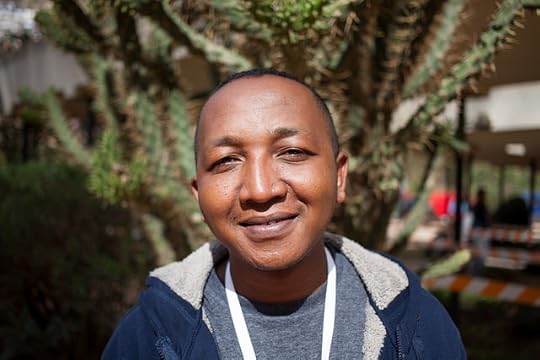
Andriankoto ‘Harinjaka’ Ratozamanana (photo by Matt Biddulph)
Andriankoto ‘Harinjaka‘ Ratozamanana, the lead organizer of Science Hack Day Antananarivo, runs Habaka, a tech innovation hub in Madagascar. Habaka has become a central hangout place for the geeks of Antananarivo. Harinjaka has a tenacious quality about him – taking initiative to drive a tech/science community in Madagascar forward in the face of many challenges. His drive has a contagious effect, inspiring many others to follow his lead. The Habaka space is co-run by a small scrappy group of locals who are passionate about facilitating a space for tech and science in Madagascar and want to elevate their community to be recognized on the world stage. The success of Kenya’s tech incubator, iHub, is a great example of a space that has brought a community together to collaborate and build great things in Nairobi. But iHub’s success often outshines other tech/science hubs across Africa to journalists who carelessly like to lump the entire continent of Africa into one single place. There are, in fact, dozens of these spaces and initiatives across the continent, some of which are cataloged by the community network AfriLabs.
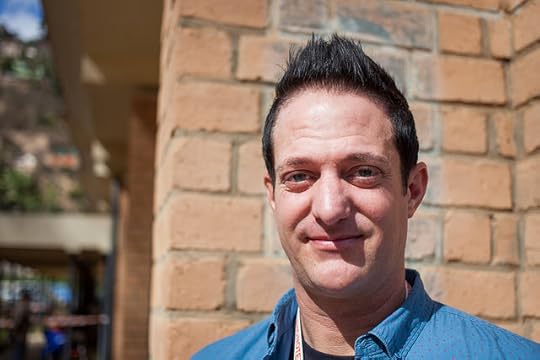
Chris Corbett (photo by Matt Biddulph)
Chris Corbett, a Bay Area expat now residing in Antananarivo, is a regular collaborator of Harinjaka’s, having helped him put together the Science Hack Day and run the Habaka space. In addition, Chris runs an endeavor called “Human Development League“, a non-profit that teaches life skills and character development through amateur sports to many of the children who live on the streets of Antananarivo. Chris has a hugely endearing nature to him; a person that exudes kindness and a desire to help people in any way he can. He told me how he came to Madagascar for what was supposed to be a five-day trip and immediately decided never to leave, turning his trip into a four month stay and a Visa process to reside in the country. As I walked around crowded markets and out-of-the-way restaurants across the city, seemingly everyone knew Chris and greeted him with hugs and smiles.
It’s amazing to see what both Harinjaka and Chris have been able to accomplish with very little, if any, funding for these initiatives over the years. They’ve navigated in-kind donations and support networks to help build out their visions thus far and now hope to find grants and sponsorships to ensure a bright future for their projects. For Science Hack Day Antananarivo, Thomson Reuters EndNote provided sponsorship for the event, helping make it the largest event that Harinjaka and Chris had put together – proving that there was a proper budding science hacker community that was just waiting to be tapped into action.
It was also fascinating to learn that one of the largest obstacles to hacking/prototyping in Madagascar was not lack of income, but the fact that hardly any companies ship to Madagascar. Before traveling to Madagascar, it’s common to have local friends ask you to buy phones, laptops and other devices for them because there is no way to get them shipped over. Many of the Science Hack Day attendees had learned about Arduinos inside and out, but had never seen one in person because there was no company that would ship them there. The few donated Arduinos I had brought were quickly snatched up as large teams formed around so that everyone could get a chance to play with them. My partner and Science Hack Day collaborator, Matt Biddulph, led an impromptu Arduino class and found himself in the middle of an Arduino-frenzy as everyone crowded around with questions about various sensors and code. My heart broke a little as numerous people came up to me saying they’d be happy to buy an Arduino if we could somehow get them shipped to the country. Getting more sensors, devices and computer/data science literacy to Madagascar could actually be critical in the fight against deforestation.
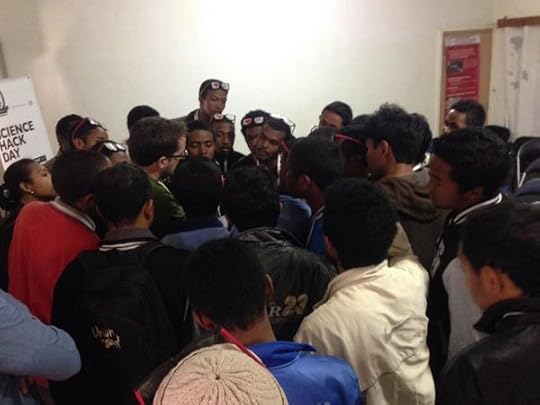
Arduino swarm
The attendees of Science Hack Day Antananarivo were some of the most endearing, excited and inventive people I’ve met. The type of people that you could never possibly be in a bad mood around even if you tried. Most worked in large teams, figuring out how each person could contribute to hacking together a concept. The hacks that emerged were highly influenced by the ubiquity of sensors for the real world. One team prototyped a concept for producing happier, fatter chickens in short timeframes by creating “smart farms” that could play calming music as well as control temperature, sound and light. The project was called Akouzen (essentially, “zen chicken”). Another team proposed using radar and ultrasound to detect and kill locusts that regularly ravage Madagascar’s crops. Perhaps for the best, there was no live locust-killing demo. The largest team worked on two prototypes: a robot security dog and an emotion detector based on measuring skin resistance. One of the journalists who came to cover the event became so excited by it that she stuck around and created a prototype of her own: a solar stove that could cook basic meals without the need for gas or electricity.
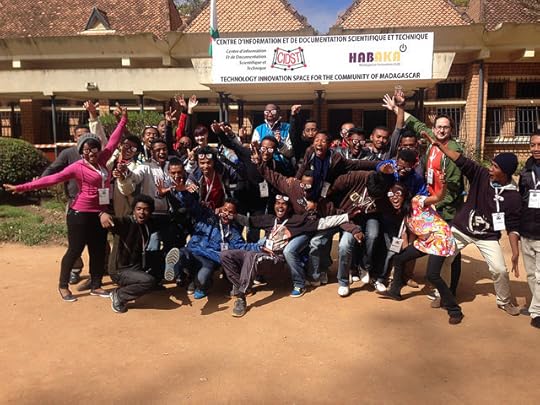
Science Hack Day Antananarivo attendees
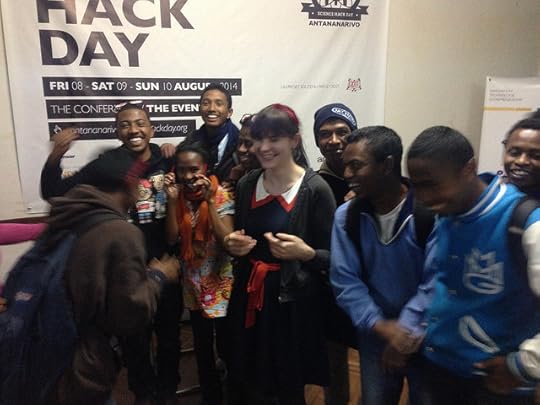
Me surrounded by joyous science hackers at the end of the event
It was the end of Science Hack Day Antananarivo that was the best. All the attendees, despite their tired state, clamored over each other to take as many ridiculously fun group photos as they could, showing off their awarded science medals and certificates, making huge group hugs, and grinning from ear to ear. Harinjaka and Chris were in an exhausted euphoric state that I know all too well as a Science Hack Day organizer. When I had organized the first Science Hack Day San Francisco in 2010, I remember barely being able to keep my eyes open but feeling like it was the best thing I had ever done. Putting together an event that brings people excitement and laughter and unconstrained creativity and experimentation is simply awesome. After the event, a retired astrophysicist dropped by Habaka in jubilation. He had read about the Science Hack Day in the local newspapers and was excited to find other individuals who were trying to make science an active pursuit in Madagascar. He regularly spoke to schools and the government about how Madagascar should invest in a small satellite and how it would have a huge impact on both education and policy. He talked of how isolated he had felt in his endeavors and now after connecting with Harinjaka and the Habaka hub, he no longer felt alone.
Some might say that Madagascar has a long road ahead to restore the many exploitations and grievances endured by their environment, government and people. While that is likely true, and many more people, policies and financial aid is needed to rebuild, Madagascar has what are likely to be the first responders in rehabilitating and improving the country: the science hackers of Antananarivo.
Ariel Waldman is the global director of Science Hack Day, a 48-hour-all-night event where anyone excited about making weird, silly or serious things with science comes together in the same physical space to see what they can prototype within 24 consecutive hours. Anyone can organize a Science Hack Day in their city — a how-to guide is available at http://sciencehackday.org/howto.


